- Home
- Farley Mowat
Sibir Page 4
Sibir Read online
Page 4
The church (a nunnery once) was crowned by bulbous towers inhabited by what seemed like a million pigeons, wheeling and spiralling like living smoke. The tree-filled grounds and the old stone buildings had an air of gentle decrepitude about them.
Irkutsk, Mark told us, was one of the earliest bastions of the Russian Empire in the East. It was founded by a band of marauding Cossacks who reached the region in 1634 and chose this spot to build a wooden fort as a base from which to harry the native Buryat people. The fort developed into a great trading centre. In the nineteenth century, it became the final staging point for anti-Tsarists exiled to the salt mines and oblivion. From Irkutsk, many of the great overland and overseas expeditions to the Far East and beyond set out. Mark showed us an unpretentious memorial to Alexei Chirikov who, in 1741, sailed with Vitus Bering to become the first known Europeans to reach the shores of Alaska.
Even more impressive was the plethora of little stones half buried under fallen leaves, marking the graves of the wives and children of the ill-fated Decembrist Revolutionaries of 1825 who were amongst the first to revolt against Tsarist rule. Wives and children voluntarily followed their men into Siberian exile along the incredibly arduous road leading to Irkutsk. They walked almost all the way, taking more than a year to complete the journey. Exhausted, sick, and starving, most of those who reached Irkutsk perished and were buried there.
Their graves were marked by very modest stones, but in the side-yard, close to the grey wall of the church, was one grave marked by an enormous granite boulder which must have weighed a good forty tons. It belonged to a fabulously rich man who accumulated most of his wealth from the use of slave labour in the salt mines. Before his death he tried to insure a kind of immortality by having this gigantic rock rolled into the churchyard to mark where his remains would lie. He had a solid bronze plug poured into a hole drilled into the rock upon which was inscribed his name and fame. During the Bolshevik Revolution, when the Reds were fighting desperately for survival against the Whites, metal became so scarce that a local gunsmith chiseled out the bronze. Now only the nameless stone remains.
We went into the church where, although this was a weekday, a special mass was being sung. The service was being conducted with the full pomp and panoply of Orthodox ritual. A hidden choir sang a lugubrious chant and the air was thick with incense. We caught glimpses of the high priest wearing a towering pearl-encrusted hat, and all but hidden from the worshippers in the dark depth of an inner sanctuary.
There were ikons – hundreds of them of every age and degree of decay – glittering dully with gold and jewels. Alas, they were not for Claire. A venerable gentleman with a long, discoloured beard shuffled up to us and in no uncertain tone informed Mark there was a service in progress and tourists were not welcome. Whereupon four members of the Soviet New Order and two embarrassed Canadians withdrew as unobstrusively as possible.
Crouched on the stone steps outside the door was the one and only beggar we ever saw in Russia. He was a bent, unkempt and dirty old man but not, apparently, crippled. When I asked about him, Mark replied, “Well, like everyone else his age he draws a full State pension. Perhaps he enjoys the role he plays.…”
As we left the churchyard the glaucous gold October sun broke through the haze and the old city of Irkutsk lying across the river from us became radiant and lovely.
Rather hesitantly Mark asked if we still wanted to visit the power plant. Discovering that none of us really had any great hankering to see it, he was not-so-secretly relieved. Being a writer himself he knew the inutility of such expeditions to anyone except industrialists, engineers and people of that ilk. He understood that the spectacle of thousands of men and women swarming over a concrete mountain in order to produce millions of kilowatts of invisible electricity would add little to our understanding of the Russian people.
“Well,” he said. “Why don’t I show you my Irkutsk instead?”
So we drove to a great stone-paved esplanade on the banks of the Angara at mid-city. This broad wall, guarding the banks against spring floods, was dotted with men and women promenading in the pale, autumnal sunshine. The half-mile-wide river flowed strong and steady below us from its source at Lake Baikal toward its union with the Yenisei, and thence onward to the Arctic Ocean. On its congealing surface were dozens of tiny rowboats manned by fishermen who, unperturbed by the skim of ice, concentrated soberly on their rods and lines. They were engaging in one of the two great outdoor pastimes of all Russians. The season was a trifle late for the other: the passionate pursuit of wild mushrooms.
We left the car and walked through a park where platoons of well-dressed men were rehearsing for their part in the coming parade to celebrate the day of the Revolution. The quietness was startling. There was none of the pulsating roar that rises from a city of half a million people in the west, and yet the broad, tree-lined avenues seemed to carry a steady stream of cars and trucks.
“It is so quiet because Irkutsk is still a wooden city,” Mark explained. “In the forest the trees absorb sound like a sponge and it is the same with the log houses of Irkutsk.”
These wooden houses were all about us; long streets of them, even near the centre of the city. They were beautifully constructed of squared logs, and many stood three stories high. Each was a work of loving labour and of art, decorated around doors and windows and under the eaves with scrolls and fretwork, sculptured shutters and complicated carved porticos painted in blues and greens to form intricate patterns against the chocolate brown of the ancient logs.
Here and there were gaps where these buildings out of another time had given way to the stark concrete constructions of the new age.
“The shape of things to come,” I mused, half to myself, “when this city becomes as faceless as all cities, and thunders and reverberates to the sound of the machine, and knows no more quietness.”
Mark stopped and looked intently at me for a moment. Then this New Man of a New Age said a heartening thing.
“We will not let that happen. There has been too much lost already in our land – by war and by senseless change. Change must come; but it cannot be allowed to obliterate the past. We have many destroyers amongst our planners – too many of them. But here in Irkutsk, as elsewhere, we are forcing them to be careful. Whole streets of these old houses will be preserved, not as museums, but as living homes. Man is a living thing, and man has roots. Any fool knows that without roots all things die, and we are not going to go that way. Just last year we persuaded the administration to give us hundreds of pounds of real gold leaf so we could re-guild the domes of every church in Irkutsk. It was not religious zeal made us do that. It was our certainty that the old things belong to life as surely as the new – and must be cared for tenderly.”
“But surely,” I demurred, thinking of the tremendous concrete waste I had seen on the outskirts of Moscow, “people who think the way you do must be very much in the minority.”
“Not so much. And we have the young people behind us now – we writers and painters. They believe we are right because they feel it in their bones. Each year there are more of us and we are already strong enough to stop the worst of the destruction. Don’t misunderstand. We are not trying to stand in the way of changing times. We only mean to be sure change does not become a universal blight.”
Thinking about my own country I was sceptical of Mark’s certainty, but I kept my doubts to myself. Later I concluded that he had not overstated the position. Wherever I journeyed I met more men and women who shared Mark’s convictions than opposed them. On every human level I heard the echo of Mark’s words. I came away convinced that whatever else may happen in the Soviet Union, the past will remain alive and vital and will continue to nurture man and to be nurtured by him.
One evening Mark offered us a choice of entertainment: a performance of the State Symphony Orchestra, a Chekhov play at the State Theatre, a Verdi opera, or a performance by a troup of Koryak folk singers and dancers (the Koryaks are the native peopl
es of the northern Kamchatka Peninsula on the Pacific coast). He apologized because there was no ballet scheduled that evening.
Claire elected to attend the symphony to satisfy her curiosity about the quality of music available in this provincial city some twenty-six hundred miles distant from Moscow. What she got was a set of five modern pieces by a group of five Leningrad composers all of whom were present in the flesh to conduct their own compositions. She reported that the theatre was packed and that Russian modern music left her just as cold as does its counterpart in North America.
I forewent the bright lights in favour of an evening spent talking with a small group of Mark’s friends.
It was mostly a writers’ evening. I was thoroughly quizzed on the status of writers in my own country and in turn heard some revealing things about the other side. Mark presented me with a number of his books. The children’s books were particularly impressive to look at, even if I couldn’t read them. On the whole, books for adults in the U.S.S.R. (unless they are art books) are poorly designed and rather shabbily manufactured. I remarked on this but Yura pointed out that in Russia adult books are sold for their content – not their appearance. They are intended to be read, not used as table ornaments or as status symbols. Furthermore, they are sold at a price everyone can afford. For instance, an average-length novel in hard cover sells for about 8o¢.
Children’s books are different. Visual appeal is considered vital for children, and the publishers go full out to achieve it. The best artists are hired to do the illustrations, which are always extensive and frequently superb. Production and design are comparable to ours but, because of the mammoth size of the printings, prices are kept to a tithe of what we must pay. Initial printings of Mark’s children’s books run from half to three-quarters of a million copies.
The shop-talk was interrupted by the arrival of a dapper, dark-complexioned young man named Yakob, bearing gifts – two bottles of Armenian cognac. Yakob was a Buryat, a member of the original cattle-breeding tribe who owned this region before the Russians came. He was also a town planner with a degree from Moscow University and, like all planners, was a rabid enthusiast.
He adroitly turned the conversation to his chosen field. Some years ago the state planning bodies realized that the twentieth century trend toward agglomeration (whereby the population tends to drift from the periphery of a country into a few mushrooming urban centres) had to be brought under control before it was too late – as it was almost too late for places like Moscow and Kiev. A first principle was established that the population growth of the most threatened cities would have to be arbitrarily arrested. The method chosen was to place stiff controls on the availability of housing – easily done since almost all the living space in the big cities is owned directly or indirectly by the state. Nobody who was not already a resident in Kiev, Leningrad or Moscow could obtain housing in those cities without a special permit, and permits were hard to come by. A would-be immigrant had to demonstrate that the city could not do without him – not vice versa.
This policy has been condemned by critics of the U.S.S.R. as proof that Russia is a police state, since it obviously restricts the free movement of the individual. However, I met few Russians who looked upon it as a tyrannical interference with their liberty. Most of them saw the point and recognized it as the only immediately practical method of keeping the growth of the metropolitan monsters in check.
As Mark pointed out it is not an absolute restriction. Those who yearn for big city life can earn a domicile permit by attaining such excellence in their jobs or professions that the city requires their services. Yura noted an interesting side affect. Hundreds of thousands of students go to study in Leningrad, Kiev and Moscow from all over the U.S.S.R. Since only a few are permitted to remain after graduation, the balance must return whence they came or otherwise disperse throughout the country where they are most needed. This is at least a partial explanation of why cultural, medical, teaching and technical services outside the big cities of Russia are of such high standard.
Now things have moved a step farther. A planned process for easing the pressures inside the big cities is taking place through the decentralization of industry. It consists of shifting heavy, noisy industries (and those which produce noxious by-products) right away from the parent cities, which then become infinitely more habitable. Those who work in the dispossessed industries follow them to greener pastures – literally greener pastures. All new industries, as well as the old ones which are being relocated, are established in satellite towns separated one from the other, and from the metropoli, by many miles of agricultural lands or forest belts. Furthermore each new satellite town has a planned upper limit to its population. When that limit is reached the satellite must begin budding-off to spawn new and more distant satellites.
“We believe in the dispersion principle as opposed to the concentration principle,” Yakob said vehemently. “Just see what we are doing here in Irkutsk.…”
He outlined the master plan which now guides the destiny of the Irkutsk district. The original city is to be maintained, improved, and to a degree modernized (a phrase which made Mark wince) as the cultural, administrative, communications and education centre for the entire Irkutsk province, an area of about the size of France. It is to be the centre of concentric rings of satellite industrial centres, which will be separated from each other by wide stretches of taiga given over to reindeer and cattle raising and other agricultural pursuits. Irkutsk and the satellites will be linked to each other by rapid transit systems – air-bus shuttles, road-bus service (both of these are already functioning) and high-speed electric trains, probably of the monorail variety.
Three satellite cities already exist. Two of them are brand new and one, based on an old coal mining centre, has been completely rebuilt. This is Cheremkhovo, ninety miles away to the northwest. Much closer are Shelekhov and Angarsk, neither of which existed prior to 1956. Shelekhov now has fifty thousand people living in a model town two miles distant from the aluminum smelting plant which is its raison d’ětre. It can absorb another fifty thousand people in secondary manufacturing before it reaches its planned upper limit. Angarsk is the “power city” based on the Angara hydro electric power station; it will develop as a “power intensive” manufacturing city until it is about the size of Shelekhov.
Because they are carefully planned, and don’t just grow like Topsy, the satellites are far more spacious and comfortable places in which to live than are the old-fashioned industrial cities. There is no problem persuading people to move to the satellites since, in so doing, they obtain better housing, better living and working conditions, and yet do not lose touch with the mother city and its amenities.
When I suggested that perhaps this decentralization program might have a military purpose in this atomic age, Yakob scoffed.
“We do all this because it makes better living conditions for human beings. It is expensive. It uses up time and materials and energy that could be spent increasing productivity in existing plants. But it is worth it. We are making sure the next generation won’t have to live in swarming dunghills. Perhaps you have to be Russian to understand this; perhaps you have to have a history of hundreds of years when people were crowded into real pig-pen slums. But if you have read Dostoievsky, you will know why it is we want to be free forever from that sort of threat.”
* The generic Russian term for northern forests.
Four
NEARLY thirty million years ago a cataclysmic event took place in the middle of Asia. The continent split latitudinally into two parts, and the northern and southern halves ground against one another like two titanic pans of ice. Along the line of pressure the earth’s crust broke and crumbled and the debris piled up to form the highest and most extensive mountain regions on earth.
Eventually the pressure eased. The two vast land masses resolidified as one but, before doing so, they rebounded slightly opening a fissure thirty to forty miles in width, more than a thousand miles lon
g, and as much as three miles deep. Because the earth’s crust was exceptionally thick in this region, the gaping wound did not fill from the bottom with molten magma. Instead it began to fill with run-off water from the surrounding mountains. So immense was its capacity that it took many thousands of years before it filled to the rim and the overflow began to run out of its western end to form the river Angara.
This was the beginning of Lake Baikal. The passage of aeons has made great changes in this, the earth’s most ancient lake. Erosion of the mountains which enclose it and the accumulation of the dead husks of astronomical numbers of aquatic animals has gradually filled the fissure with sediment, reducing Baikal’s length to about four hundred miles. Still it remains the deepest of all lakes, well over a mile deep in places. It contains about a fifth of all the free fresh water in the world (almost as much as the basins of all five of the Great Lakes of North America). Although much reduced from their original Olympian heights, the surrounding mountains still tower high above this ancient inland sea. Earthquakes still shake the region but, by comparison, they are only tiny residual shivers of the convulsion which gave birth to the Baikal fissure.
The lake’s fantastically clear waters shelter a community of living things that have evolved in their own way through millions of years. More than a thousand species of plants and animals living in Baikal are found nowhere else. Hidden in the mountain heart of Asia, Baikal successfully protected and nurtured a unique community of life through an immense span of time.
And then came man. At first he did no harm. Evenk hunters were the last in the aboriginal line to occupy its shores. They and the Buryats to the south believed the lake was sacred. They peopled it with spirits and for the most part stayed off its treacherous waters, which can roar in oceanic fury under the lash of sudden, blasting winds of hurricane velocity.

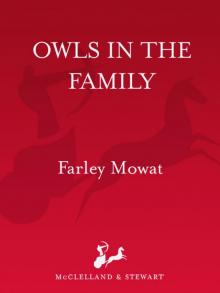 Owls in the Family
Owls in the Family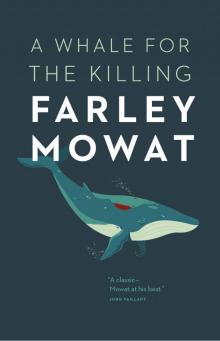 A Whale for the Killing
A Whale for the Killing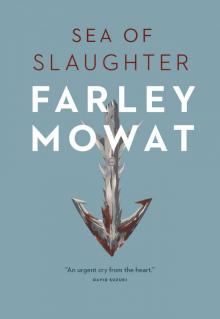 Sea of Slaughter
Sea of Slaughter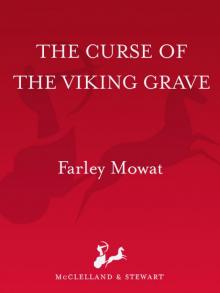 The Curse of the Viking Grave
The Curse of the Viking Grave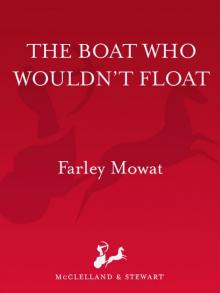 The Boat Who Wouldn't Float
The Boat Who Wouldn't Float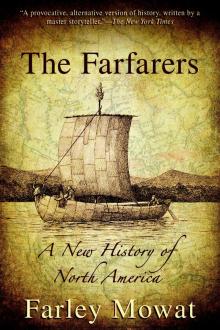 The Farfarers: Before the Norse
The Farfarers: Before the Norse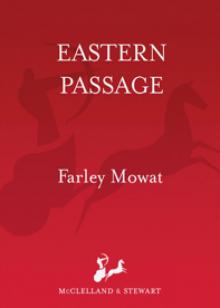 Memoir
Memoir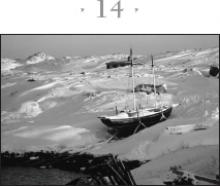 Bay of Spirits: A Love Story
Bay of Spirits: A Love Story The Black Joke
The Black Joke Sibir: My Discovery of Siberia
Sibir: My Discovery of Siberia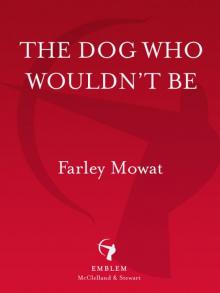 The Dog Who Wouldn't Be
The Dog Who Wouldn't Be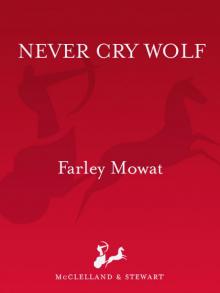 Never Cry Wolf
Never Cry Wolf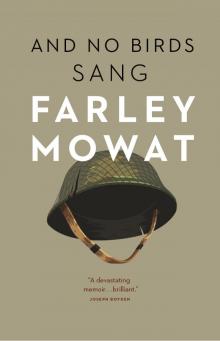 And No Birds Sang
And No Birds Sang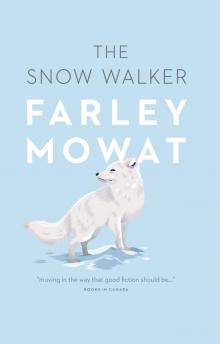 The Snow Walker
The Snow Walker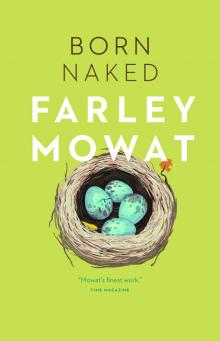 Born Naked: The Early Adventures of the Author of Never Cry Wolf
Born Naked: The Early Adventures of the Author of Never Cry Wolf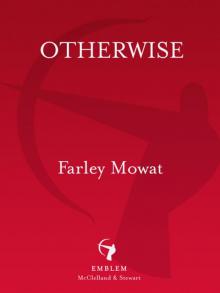 Otherwise
Otherwise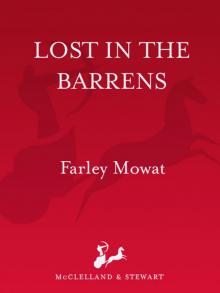 Lost in the Barrens
Lost in the Barrens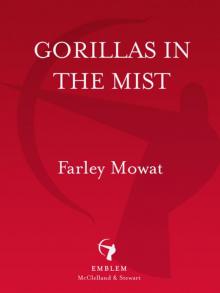 Gorillas in the Mist
Gorillas in the Mist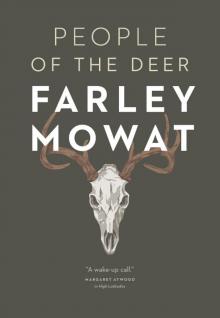 People of the Deer
People of the Deer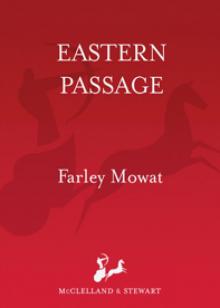 Eastern Passage
Eastern Passage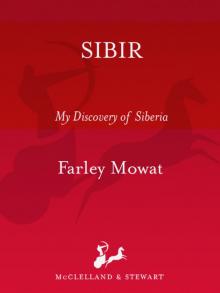 Sibir
Sibir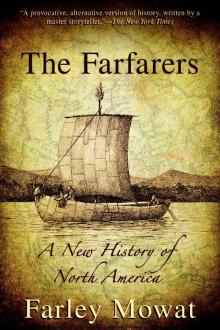 The Farfarers
The Farfarers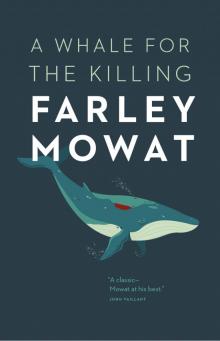 A Whale For The Killing (v5.0)
A Whale For The Killing (v5.0)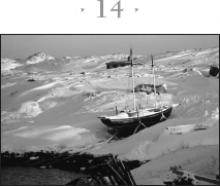 Bay of Spirits
Bay of Spirits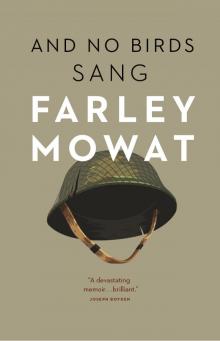 And No Birds Sang (v5.0)
And No Birds Sang (v5.0)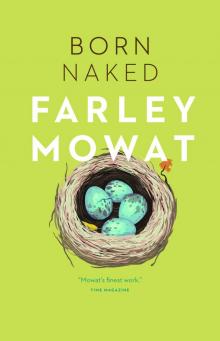 Born Naked
Born Naked